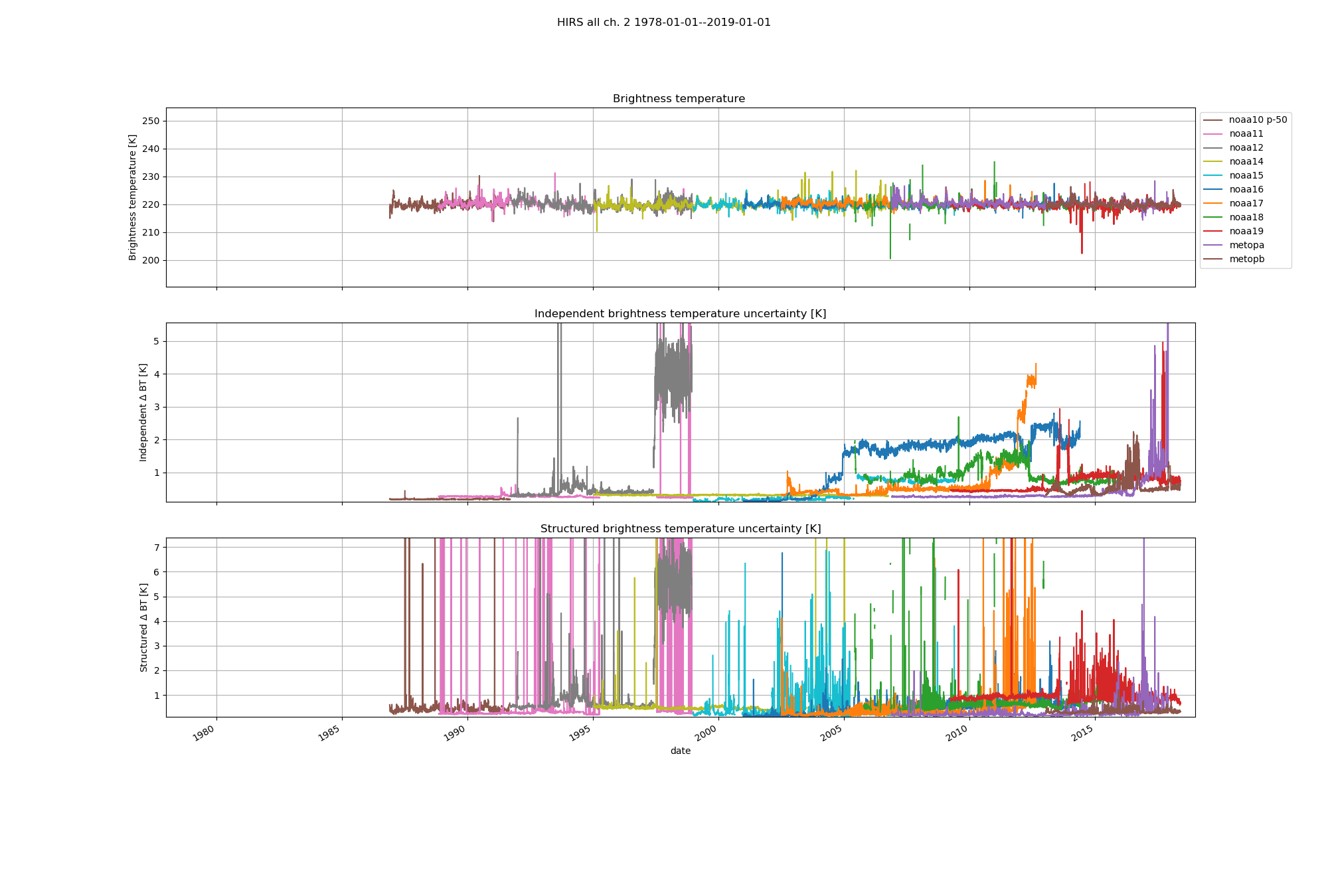Measuring long-term temperature trends from satellites is possible, but difficult due to a variety of reasons.
This is ongoing research.
In short: the satellites that have been around long enough were built for measuring weather, not climate, and the standards to which instruments need to be built to measure one are entirely different from the other.
We have had satellite measurements of the atmosphere since the 1960s, and operationally since the late 1970s. Those have always included infrared radiometer measurements, which means that, in principle, we can construct a record of surface (both land and sea) and atmospheric temperatures for the past 40 years at least. The sensors themselves aren't very complicated — but to determine a trend we would need to be very confident about their uncertainty, stability, and inter-satellite variability.
If you were to simply take 40 years of HIRS infrared measurements and plot them, you don't know if the changes are due to atmospheric or instrumental changes.
From 2015 to 2019, I was part of the FIDUCEO project which aimed to bring the science of metrology (science of measurement) to satellite observations. Taking 40 years of AVHRR (for sea surface temperature) or HIRS (for atmospheric temperature and humidity) measurements, with 16 different editions of the instrument over a period of 40 years. But AVHRR was built to look at pictures of clouds. If you look at pictures of clouds, the user doesn't care if one satellite has its pictures 0.5% brighter than the previous one. They just tweak their monitor a bit! But if you take the global climate system, then that corresponds to more than 1K temperature difference, which for the oceans, would be huge. In FIDUCEO, we aimed to:
- Develop a metrology of Earth Observation
- Produce Fundamental Climate Data Records (FCDRs) for various operational meteorological instruments in visible, infrared, and microwave, meaning:
- Per-datum metrologically traceable uncertainty characterisation;
- Per-datum information on correlation structures: which component of the error estimate cancels out when averaging and which component remains;
- Harmonisation between the various satellite sensors.
Here are 40 years of HIRS (versions 2, 3, and 4), on which we tried to do some harmonisation. The top panel shows global average brightness temperature per 24-hour period, as measured by channel 2 which IIRC peaks somewhere in the stratosphere, so this would correspond roughly to an atmospheric temperature somewhere up in the stratosphere (which, incidentally, is cooling as the Earth's surface is warming):

The different colours indicate different satellites. As you can see, there are both jumps between satellites, and trends within one satellite. Some of this is expected, as polar-orbiting sun-synchronous satellites have a drifting local equator crossing time, but some of it is due to instrumental problems. Some of those problems are captured by the structured uncertainty in the bottom panel, but not all of it. The data only go back to the mid-1980s, because before that, there weren't enough overlaps to constrain the differences between subsequent pairs of satellites based on simultaneous nadir overpasses (SNOs). For satellites in the early 1980s and late 1970s, the coefficients to calibration the thermometres measuring the temperature of the on-board calibration target appear to have been lost. For the earliest satellites the header data does not match available documentation. Software to produce this figure is on Github, raw source data are available from NOAA CLASS, some processed data from FIDUCEO.
This is for a global average. To do this regionally would add additional complications.
The CLARREO programme is proposed to be the first in-orbit SI reference for accurate calibration. Had we had that for the past 40 years, our job would be easier. But CLARREO is still waiting for funding.
So the answer to your question is: with what we have now — not good enough — yet.
But if you are contemplating a career in satellite techno-archeology, I recommend it. It's great fun.
